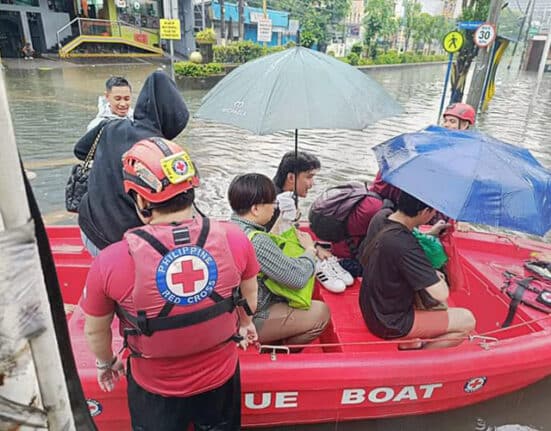THE Philippines experiences an average of 20 typhoons each year, with the peak season running from June to November, and the most active months usually being August and September.
In his recent State of the Nation Address (SONA), President Bongbong Marcos Jr. announced that the Philippines has constructed and continues to build over five thousand flood control infrastructures.
Just one day after, Typhoon Carina came in and checked if they really existed.
Like any other Super Typhoon, Carina did not directly strike the Philippines. It instead pulled strong clouds from the southwest monsoon, tugging along devastating effects and causing significant damage across various regions.
The storm brought heavy rains and strong winds, leading to severe flooding in several areas.
The pressing question looms: Where exactly were these flood control structures built? And if they are in place, why do some areas in the country still seem to be sinking beneath the floods?
Filipinos have seen how notorious typhoons are, as well as the threat they pose to our country each year.
As we confront future calamities, can our resilience alone truly shield us from the storm?
Beyond resilience
The term “resilience” often describes Filipinos, celebrated for our knack for bouncing back from calamities and our unwavering optimism.
While these sentiments may seem uplifting, they shouldn’t, however, be romanticized.
We should not glorify the plight of many Filipinos caused by a lack of proper long-term solutions. Rather, it should serve as a wake-up call.
Hazel Bitaña, a college student residing in San Mateo, Rizal, said in an interview with republicasia, that the recent Typhoon Carina made her physically, mentally, and financially exhausted.
“After ng bagyo, walang katapusang linis,” she said.
“Linis putik doon, laba ng mga binaha kaliwa’t kanan. At kapag hindi na kayang isalba ang gamit, mapipilitan kang gumastos, maglabas ng pera kasi kailangan palitan and it’s a necessity pa.”
Bitaña added: “We are in a province area and almost near the mountains yet mataas pa din palagi ang tubig if bumabaha samin. And to think na mas mataas ang water level ng flood this Typhoon Carina samin than the 2009 Typhoon Ondoy. It just worsened.”
A national wake-up call
Besides the poor drainage systems and rapid urbanization, extensive deforestation is also one major cause of severe flooding in the Philippines.
Some mining companies illegally mine in areas that need preservation, triggering landslides in nearby communities whenever a storm occurs.
For example, deforestation in the Sierra Madre mountain range has increased flooding in areas like Rizal.
The mountain range acts as a natural barrier that influences weather patterns and protects the eastern seaboard of Luzon from the full force of typhoons.
However, destructive projects like the China-funded Kaliwa Dam project in the Sierra Madre mountains continue to pose significant environmental challenges.
Bitaña told republicasia that it is time to demand long-term goals and solutions for our national concerns.
“Hindi porket we have the ability to still smile in every struggle we encounter eh hindi na tayo magde-demand ng accountability on those in the position to make long-term solutions for calamities and disasters like these,” she said.
Filipino resiliency should never be an excuse for the government’s incompetency in addressing such situations.
Let’s move beyond glorifying Filipino resilience and start holding our leaders accountable with demands for true governance and integrity.
With reports from Cedrix Leppago
How useful was this post?
Click on a star to rate it!
Average rating 0 / 5. Vote count: 0
No votes so far! Be the first to rate this post.
We are sorry that this post was not useful for you!
Let us improve this post!
Tell us how we can improve this post?








